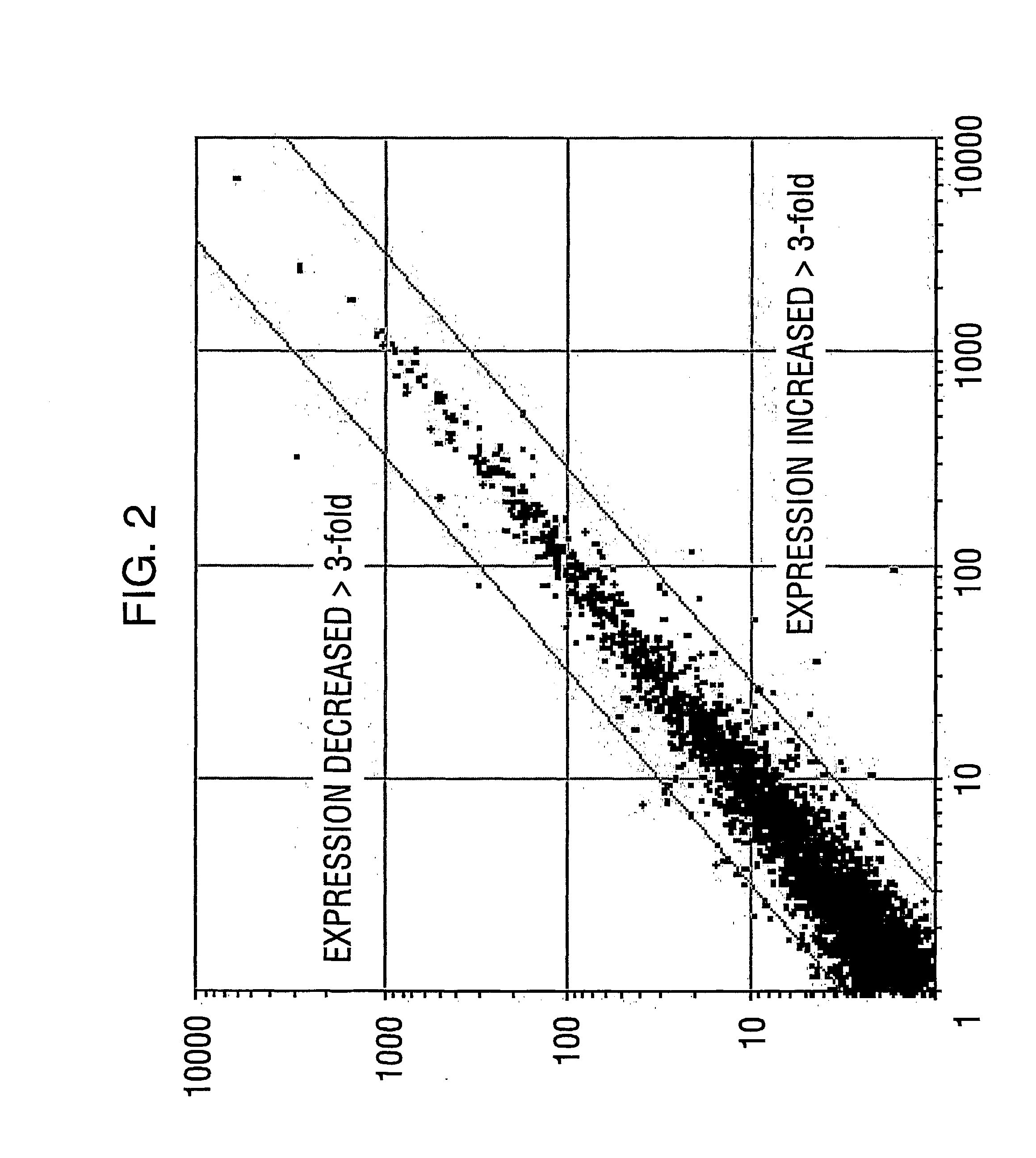Differential expression screening method
a technology of expression screening and differentiation, applied in the field of gene discovery, can solve the problems of the absolute levels of a gene product of interest, the difference in expression of that gene product between two particular states, and the difficulty of identifying many genes that may play important roles in cellular processes
- Summary
- Abstract
- Description
- Claims
- Application Information
AI Technical Summary
Benefits of technology
Problems solved by technology
Method used
Image
Examples
example 1
[0207] The Use of Smartomics for Gene Discovery in Macrophages
[0208] Macrophages are associated with a variety of disease conditions, including cancer, atherosclerosis and inflammatory diseases such as arthritis. In many of these conditions, the macrophage secretes factors that exacerbate the disease condition. These factors include angiogenic factors, chemotactic agents and inflammatory cytokines. Some of these factors are known, but it is likely that there are other factors that are currently not known and that may be important targets for therapy. In many disease states, macrophages exist in areas of low oxygen (hypoxia) and it is this physiological state that acts as a signal to turn on a number of genes. Given this background, it is reasonable to suggest that important targets for drug development in the fields of cardiovascular disease, cancer and inflammatory disease may be induced in the hypoxia environment.
[0209] A simple approach, that would represent the current state of ...
example 2
[0218] The Use of Smartomics for the Identification of Hypoxia-Regulated Genes in Macrophages
[0219] The invention has been applied to the identification of hypoxia-induced genes and proteins in macrophages.
[0220] Smartomics was utilised to improve the discovery of genes activated or repressed in response to hypoxia in primary human macrophages. As explained in Example 1, this involves augmenting the natural response to hypoxia, by experimentally introducing a key regulator of the hypoxia response, namely hypoxia inducible factor 1.alpha. (HIF-1.alpha.). Overexpression of HIF-1.alpha. was done either in isolation or was done in combination with exposing the cells to hypoxia. This allowed the detection of resulting gene expression changes that would otherwise have not been detectable in response to hypoxia alone.
[0221] Although HIF-1.alpha. is well known to mediate responses to hypoxia, other transcription factors are also known or suspected to be involved. These include a protein cal...
example 3
[0286] EIAV Vector Construction
[0287] This example describes the generation of an EIAV vector (pONY8.1SM) with four unique cloning sites downstream of a CMV promoter. pONY8.1SM is the most minimal EIAV vector to date in terms of EIAV sequence that it contains (.about.1.1 kb) and EIAV proteins it expresses (none). The vector is an example of a gene transfer system that could be used in a differential expression screening method according to our invention. However, other gene transfer systems based on any other lentivirus, retrovirus, herpesvirus, adenovirus, alphavirus, adeno-associated virus, herpes virus or DNA in any appropriate formulation, could be used.
[0288] Construction of EIAV-Based Vector pONY8.1SM
[0289] The starting point was pONY4.0Z (GB9727135.7 and Mitophanous et al., 1999). The first two ATG triplets in the EIAV gag region were replaced with ATTG to eliminate the expression of gag from the EIAV genome while maintaining gag sequences in the vector. The gag sequence was ...
PUM
| Property | Measurement | Unit |
|---|---|---|
| Solubility (mass) | aaaaa | aaaaa |
| Biological properties | aaaaa | aaaaa |
| Sensitivity | aaaaa | aaaaa |
Abstract
Description
Claims
Application Information
 Login to View More
Login to View More - R&D
- Intellectual Property
- Life Sciences
- Materials
- Tech Scout
- Unparalleled Data Quality
- Higher Quality Content
- 60% Fewer Hallucinations
Browse by: Latest US Patents, China's latest patents, Technical Efficacy Thesaurus, Application Domain, Technology Topic, Popular Technical Reports.
© 2025 PatSnap. All rights reserved.Legal|Privacy policy|Modern Slavery Act Transparency Statement|Sitemap|About US| Contact US: help@patsnap.com



